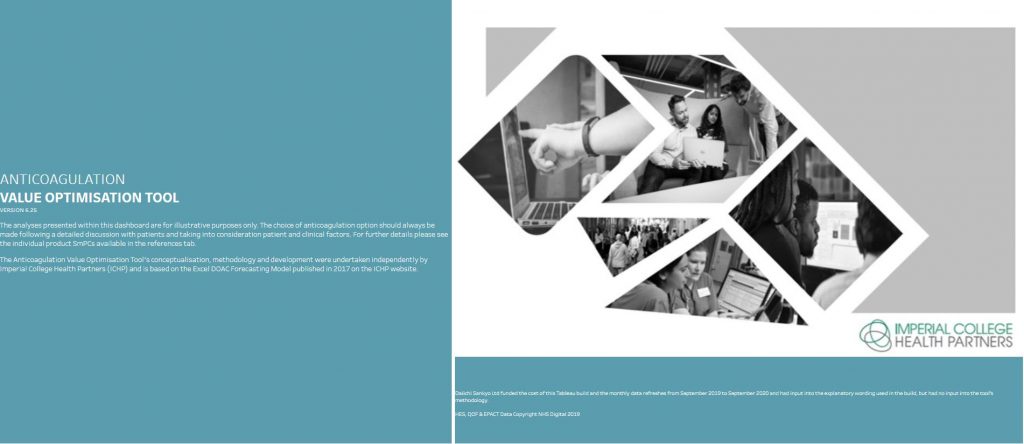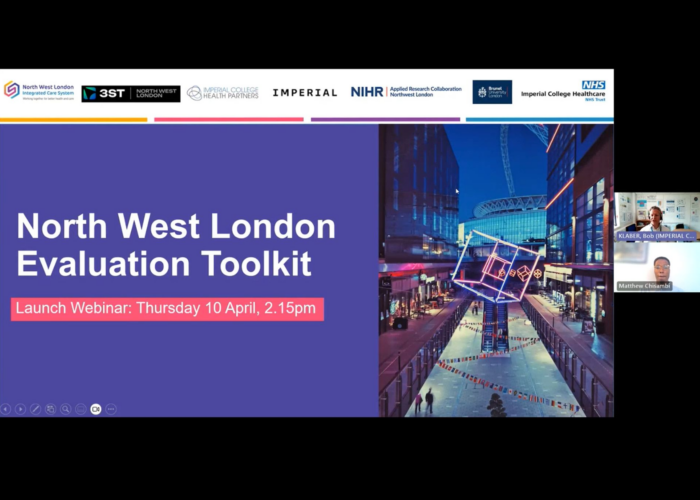 Clinical commissioning groups can now quickly calculate the number of strokes that could be avoided in their region thanks to a data-driven new tool from ICHP.
Clinical commissioning groups can now quickly calculate the number of strokes that could be avoided in their region thanks to a data-driven new tool from ICHP.
The new Anticoagulant Value Optimisation Tool was launched for World Stroke Day.
The theme of World Stroke Day 2019 was stroke risk and prevention, and the new online tool developed by ICHP and NHS RightCare aims to help clinicians reduce the risk of strokes within their populations as part of the NHS Long Term Plan on cardiovascular disease.
Atrial fibrillation (AF) is an irregular and often fast heart rhythm and is the most common heart rhythm disturbance. Patients with AF have a five-fold higher stroke risk than those without AF (Stroke Association, 2017). Despite the serious impact of AF, it often causes no symptoms.
The NHS Long Term Plan identifies cardiovascular disease as a clinical priority and sets the ambition for the NHS to help prevent over 150,000 heart attacks, strokes and dementia cases over the next ten years.
Currently, over one million people are diagnosed with AF in England, and 20 per cent of strokes are due to AF. More than 400,000 people are unaware they have AF – creating a ‘detect’ opportunity for the NHS – while many patients known to be at risk of AF are not anticoagulated – a ‘protect’ opportunity.
In addition, some patients with known AF do not receive the most optimal treatment, resulting in avoidable strokes.
Set against that background, ICHP’s new Tableau version of the Anticoagulant Value Optimisation Tool can highlight the AF detect and protect opportunity gaps, and the money-saving opportunities which exist for CCGs by prescribing stroke-protecting anticoagulants for AF patients in the most price-sensitive way.
Freeing up funds in this way allows CCGs to reinvest this money in areas that they wish to prioritise for their local population. For those CCGs that wish to target the AF ‘detect’ gap by screening potential AF patients and closing the AF ‘protect’ gap by anticoagulating AF patients against the risk of stroke, the tool enables CCGs to measures the value of doing so.
DOACs predicted to claim nearly 100% of the AF anticoagulation market share over the next few years based on current trends, making clinically appropriate price-sensitive prescribing even more important as the market share of warfarin declines.
Data used in the tool dashboard is drawn from existing NHS data assets including Hospital Episode Statistic (HES), Quality Outcomes Framework (QOF) and primary care prescribing (ePACT) and will help measure:
- The prevalence of AF in primary care and the detect and protect opportunity gaps that exist for each selected CCG compared to their RightCare CCG cluster average values (using QOF data)
- The secondary care NHS burden (three-year trend and two-year forecast) for both AF and all-stroke inpatient admissions (HES data)
- The prescribing cost-saving predicted to be available by adopting clinically appropriate price-sensitive prescribing for new AF patients in the future to 2023 (ePACT data).
The insights this tool offers have already been welcomed by Dr Matt Kearney, Programme Director at UCL Partners Academic Health Science Network.
He said: “In response to the Long-Term Plan, CCGs across the country are prioritising improvement in the treatment of high-risk conditions such as atrial fibrillation to prevent large numbers of strokes. This will result in huge savings, but there can also be new cost pressures from the increase in DOAC prescribing,”
“This is a great tool that will help minimise those pressures in real-time. For every CCG, the tool shows current spend on warfarin and DOACs, the amount that will be saved by adopting a price-sensitive approach to DOAC prescribing, and crucially, the number of additional strokes that could be averted if those savings are then reinvested in diagnosis and treatment optimisation.”
“Too many people are still living with undetected, high-risk conditions such as high blood pressure, raised cholesterol, and atrial fibrillation.”
“We believe that offering CCGs and clinicians insights into how funds can be released and therefore invested in AF detection and protection is an important way of helping to further the NHS Long Term Plan and ultimately of saving lives.”
Healthcare professionals can access the Anticoagulant Value Optimisation Tool here please request a username and password by emailing: b.i@imperialcollegehealthpartners.com
The analyses presented within the tool are for illustrative purposes only. The choice of anticoagulation option should always be made following a detailed discussion with patients and taking into consideration patient and clinical factors. The tool’s conceptualisation, methodology and development were undertaken independently by Imperial College Health Partners (ICHP) and is based on the Excel DOAC Forecasting Model published in 2017 on the ICHP website. Daiichi Sankyo Ltd funded the cost of the Tableau tool build but had no input into the tool’s methodology.
HES, QOF & EPACT Data Copyright NHS Digital 2019




